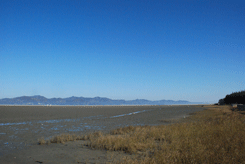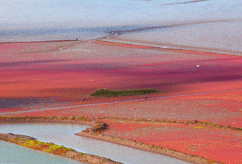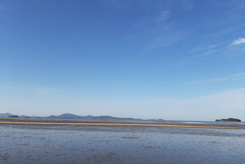UNESCO Heritages
 |
 |
 |
Jejudo / Tidal Flats
Jejudo
The Jeju Island, 73km long and 41km wide, came into existence when lava spewed from a submarine volcano and surfaced from the sea. Jejudo, the largest and most famous of 3,300 islands of Korea, is approximately within an hour flight from Seoul or Busan. Popularly known as the island of three many or plenties or sometimes referred to as "Samdado Island" because of its abundance of rocks, wind, and women. Past volcanic activity has littered the island with an assortment of beautiful and unusually-shaped black rocks and wind from the ocean blows steadily throughout the year. The island is also known for three lacks (beggars, thieves and locks), which is a beautiful part of culture, and three treasures (flora, marine ecology and folklore). The island's landscape formed by the volcanic eruption and its plant life are radically different from the mainland. Several scenic waterfalls, lava cliffs along the coastal water, huge lava caves, and hundreds of volcanic cones are scattered around the island. The island still offers a good opportunity to witness the women divers at work in the sea. The Jeju Island is inextricably linked to its stone culture. It starts and ends with stone. Jeju people are born in stone houses surrounded by stone fences. They work in fields fenced in by stacked stones. When they die their bodies are returned to the rocky earth, buried under a mound surrounded by stone. Historically, the island was used as a place of exile for those who fell out of favor in the Korean court. Jeju's phenomenal natural beauty, historical legacies, quirky museums, and array of water sports make it one of the best vacation spots in Korea.
Tidal flats
The tidal flats
of Korea comprises four component parts: Seocheon Getbol, Gochang Getbol, Shinan Getbol and Boseong-Suncheon Getbol. The site exhibits a complex combination of geological, oceanographic and climatologic conditions that have led to the development of coastal diverse sedimentary systems. Each component represents one of four tidal flat subtypes (estuarine type, open embayed type, archipelago type and semi-enclosed type).
The shallow waters in the Yellow Sea region hold some of the largest and most spectacular intertidal wetlands in the world. These sites support exceptionally rich biodiversity, but are best known for some of the largest congregations of migratory waterbirds in eastern Asia, many of which are globally threatened by habitat loss along their migratory pathways, collectively known as the East Asian ? Australasian Flyway. Up to 100,000 shorebirds use the mudflats around Yubu island in the Seocheon Getbol during migration, including the Critically Endangered Spoon-billed Sandpiper and the Endangered Far Eastern Curlew. Other species, such as Vulnerable Saunders’s Gull and Endangered Black-faced Spoonbill stay to nest in the coastal wetlands of the Yellow Sea.
Sitting on the north-eastern fringe of the Yellow Sea, straddling the western coast of the Korean Peninsula and China, South Korea’s wetlands form an integral part of this coastal ecosystem.
The sites host high levels of biodiversity, with reports of 2,150 species of flora and fauna, including 22 globally threatened or near-threatened species. It is home to 47 endemic and five endangered marine invertebrate species besides a total of 118 migratory bird species for which the site provides critical habitats. Endemic fauna includes Mud Octopuses (Octopus minor), and deposit feeders like Japanese Mud Crabs (Macrophthalmus japonica), Fiddler Crabs (Uca lactea), and Polychaetes (bristle worms), Stimpson’s Ghost Crabs (Ocypode stimpsoni), Yellow Sea Sand Snails (Umbonium thomasi), , as well as various suspension feeders like clams. The site demonstrates the link between geodiversity and biodiversity, and demonstrates the dependence of cultural diversity and human activity on the natural environment.






